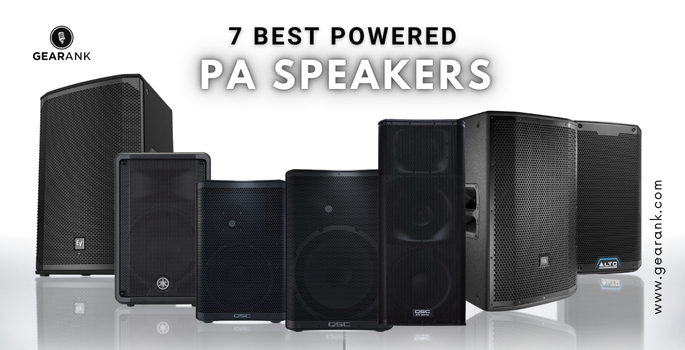
Disclosure
We recommend all products independently of 3rd parties including advertisers. We earn advertising fees from:
• • • • •

• • • • •
Amazon
As an Amazon Associate we earn from qualifying purchases.
• • • • •
PA System Guides
We have a range of guides related to PA systems which you will find helpful:
In the past, powered PA speakers were known to be bulky and difficult to transport due to their built-in amplification. However, with the advancements in technology, the best PA speakers are now designed to be more compact and efficient.
Thanks to these technological advancements, loud fans, and large heat sinks are no longer necessary, making today’s powered PA speakers more reliable, easier to transport, and mount.
Additionally, powered PA speakers are highly versatile compared to passive setups. They can be used for various purposes such as Main FOH speaker, floor wedge, delayed speaker, or even as an instrument speaker for keyboards, synths and e-drums.
Guitarists who use effects with amp and pedal modeling also prefer using PA powered speakers as substitute speakers for amps. They can fully utilize the amp modeling from their multi-fx pedals without the need for a traditional amplifier.
Ready to choose which PA Speaker is the best for you? Read on.
| Gearank* | SRC* | Check Price | ||||||
|---|---|---|---|---|---|---|---|---|
| Best Budget PA Speaker | ||||||||
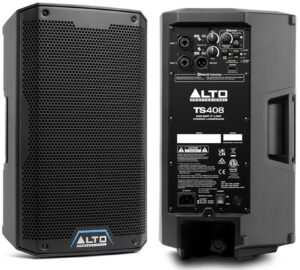
|
Alto Professional TS408 - 8" | 92 | 200+ | |||||
| Best Powered PA Speakers under $500 | ||||||||
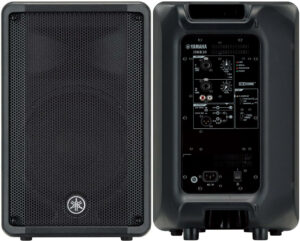
|
Yamaha DBR10 - 10" | 95 | 350+ | |||||
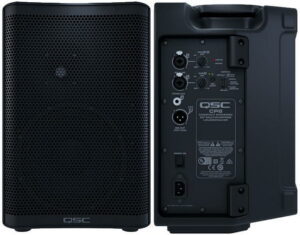
|
QSC CP8 - 8" | 97 | 250+ | |||||
| Best Powered PA Speakers under $1000 | ||||||||
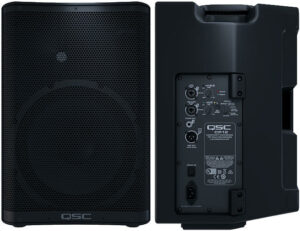
|
QSC CP12 - 12" | 96 | 300+ | |||||
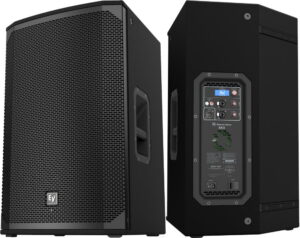
|
Electro-Voice EKX-15P - 15" | 96 | 275+ | |||||
| Best PA Speakers under $2000 | ||||||||
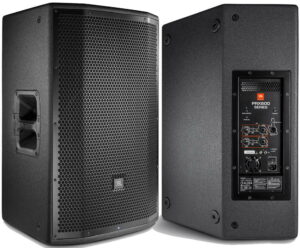
|
JBL Professional PRX815W - 15" | 96 | 175+ | |||||
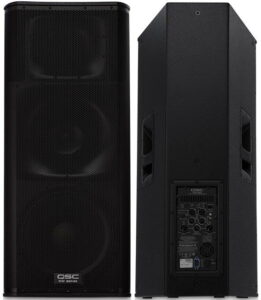
|
QSC KW153 - 15" | 97 | 175+ | |||||
Author & Contributors
Raphael Pulgar
I've been an audio engineer for 20 years specializing in rock and metal recordings. I also play guitar and produce original music for my band and other content creators.
Best Budget PA Speaker
Alto Professional TS408 2000W 8
Cons
- No adjustable tone controls that could manually adjust on the speaker
- EQ profile could be a bit better, but for the price this is a really great speaker
Pros
- Plenty of power and range for average size building
- Durable and sturdy. Easy to pack, haul, hookup and position quickly
- Used for about 6 hours total run time. No issues with overheating or degraded sound quality over time
- Very good bass without a sub. Connecting to the speakers and pairing them was easy
The Alto Professional TS408 is a powered speaker with a 2,000-watt output, an 8-inch woofer, a 1-inch ceramic driver, Bluetooth connectivity, and a 3-channel mixer. It is part of the Truesonic 4 series, designed to provide modern features and technology for stage-ready performance.
The TS408 is an excellent choice for musicians, DJs, and sound engineers due to its many advantages. It offers a powerful and clear sound that can easily fill up a medium-sized venue, thanks to its frequency response of 50 Hz to 20 kHz and a maximum SPL of 128 dB12. Users appreciate the speaker's excellent clarity, punchy bass, and crisp vocals. Additionally, it has a lightweight and compact design that makes it easy to transport and set up, weighs only 23.6 lbs., and features ergonomic handles for carrying. The speaker is also durable and sturdy, with a rugged wood cabinet that protects it from damage during transport and use. It can be used vertically or horizontally as a main speaker, floor monitor, or side fill. Furthermore, it has a built-in fan that keeps it cool and prevents overheating, allowing it to handle long hours of use without any sound quality or performance issues.
The TS408 offers excellent bass without a subwoofer, thanks to its 15-inch woofer that produces deep and punchy bass tones that can handle a wide range of music genres and applications. Users say that the speaker has excellent bass without a subwoofer. Bluetooth connectivity allows users to control the speaker's settings via a dedicated app wirelessly, adjusting the EQ, delay, crossover, and other parameters from their tablet or smartphone. Additionally, it has True Wireless Bluetooth linking capabilities, which enable users to pair two speakers together for stereo sound.
However, the TS408 also has some cons that users should know. It does not have any knobs or buttons that allow users to manually adjust the tone of the speaker on the unit itself, and users have to use the app or the 3-channel mixer to tweak the sound. Some may find this inconvenient or limiting, especially if they cannot access the app or the mixer. The EQ profile could also be better, as it lacks some warmth and presence in the midrange. The speaker may sound harsh or tinny at high volumes.
Overall, the Alto Professional TS408 is a versatile and reliable speaker that offers many features and power for the money. It combines the legendary Alto sound quality with the latest technology and features to give users a great-sounding and easy-to-use speaker. It is ideal for musicians, DJs, and sound engineers who need a speaker that can handle any gig and impress any crowd. The TS408 is a speaker that users can trust and enjoy.
Specifications
- LF Driver: 10" Cone, 2" Voice Coil Ferrite Magnet
- HF Driver: 1" Throat Compression
- Amplifier: Bi-amplified Class D
- Output Power Peak: 700W (500W LF, 200W HF)
- Output Power Continuous: 325W (260W LF, 65W HF)
- Frequency Response: 55Hz-20kHz (-10dB)
- Maximum Peak SPL: 129dB
- Crossover Frequency: 2.1kHz
- Enclosure: Plastic
- Mounting: Pole, Floor, Wedge
- Inputs: 1 x XLR/TRS Combo (Mic/Line) , 1 x XLR/TRS Combo (line only), 1 x Stereo
- Outputs: 1 x XLR
- Controls: Power Switch, 3 x Level Knobs, Mic/Line Switch, D-Contour (FOH, Off, Monitor), HPF Switch (120Hz, 100Hz, Off)
- Dimensions: 19.4" x 12.1" x 11.4"
- Weight: 23.2 lbs.
The Best Active PA Speakers under $500
Yamaha DBR10 - 10" - 700W
Cons
- A bit boomy
- Carrying handle could be better
Pros
- Lightweight speaker, yet very powerful
- Versatile input/output options
- Able to fill a medium-size room
For a powered speaker that weighs under 25 pounds, the Yamaha DBR10 is one loud PA speaker, putting out a massive 129 SPL with good clarity and at an agreeable price.
With a 10" main speaker, you might expect it would be a bit lacking in the bass department, but it performs reasonably well there, too, with a frequency range down to 55Hz. The combination of portability, power, and price makes this a compelling option, and is why it's been so popular and well-regarded since its release in 2014.
And it's very versatile. I have used the DBR10 as an 'FRFR' (Full Range Full Response) amp with guitar modeling, a PA / FOH powered speaker, and a stage monitor. It is one of the best powered speaker to pair with guitar processors.
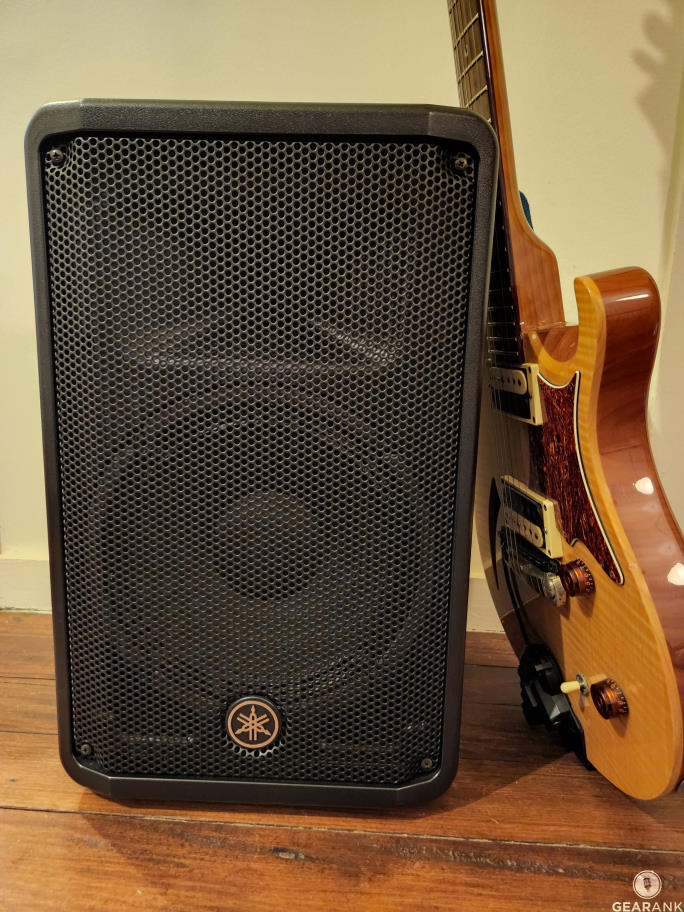
Yamaha DBR10 with a PRS SE Custom Semihollow to give you an idea of the size.
This powered PA speaker has a mixer and two channels, each with an XLR/TRS combo input and volume controls, but keep in mind that only one of the channels can accept a mic-level input (switchable between Mic/Line).
The second channel also has stereo RCA phono connectors for adding program music. I can confirm that you can use these simultaneously as the line input. There are better ways to do it, but if you can balance the volumes of these inputs, you could call it a 3-channel mixer.
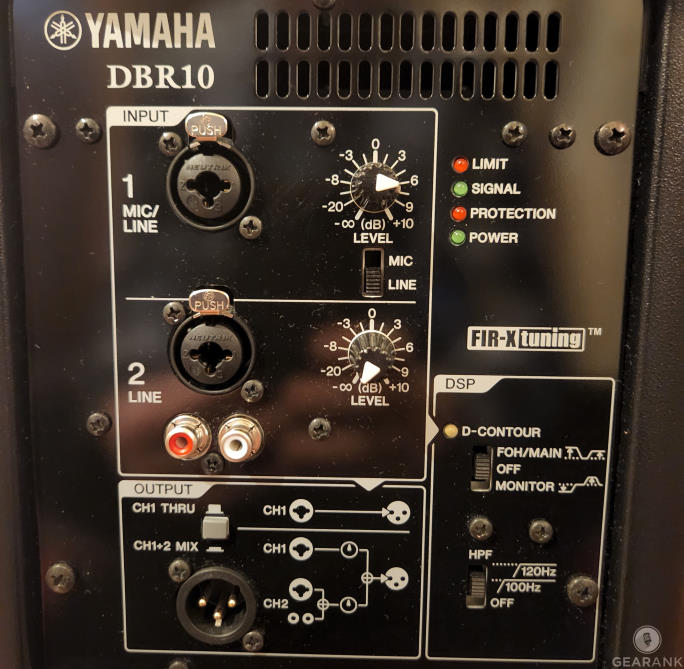
Yamaha DBR10 Rear Mixer Panel
As standalone FOH speakers, they work well in smaller venues and medium-sized venues for styles that aren't loud or bass-heavy. Their sound is best described as clean, loud, and surprisingly full. They are viable concert speakers.
They provide reasonable bass for many styles, but if you want some real 'thump' or are in a larger venue, you'll want to pair them with the best PA subwoofer. The DBR10 has an excellent reputation for combining well with subwoofers, and the HPF switch works well for this purpose.
Although others say that this powered speaker is easy to scratch, I've only experienced a few minor ones. It's a good idea to at least get a 'Speaker Tote Bag' for a 10" speaker enclosure like this one made by Gator to keep those classy looks. That particular bag has worked well for me.
The Yamaha DBR series has been around since 2014 when they brought some of the DSP magic from their higher-priced DXR series to this more affordable range, and they've been quite popular and well-regarded ever since.
This fantastic, affordable, lightweight powered speaker sounds great and offers excellent versatility. It looks good and has been a reliable workhorse for many (including me), backed by Yamaha's 7 year warranty.
It's suitable for use everywhere from practice at home, on stage as a monitor or an instrument amp, as main powered speakers for smaller venues, or coupled with subwoofers in larger venues. I find it to be one of the best pa speakers when it comes to versatility and portability.
The power at such a light weight is the standout feature, making it suitable for a broader range of situations. There may be bigger, better, more expensive powered speakers out there, but at this weight, the DBR10 is in a class of its own.
This is one of the best PA speakers for those who need something portable.
Specifications
- LF Driver: 10" Cone, 2" Voice Coil Ferrite Magnet
- HF Driver: 1" Throat Compression
- Amplifier: Bi-amplified Class D
- Output Power Peak: 700W (500W LF, 200W HF)
- Output Power Continuous: 325W (260W LF, 65W HF)
- Frequency Response: 55Hz-20kHz (-10dB)
- Maximum Peak SPL: 129dB
- Crossover Frequency: 2.1kHz
- Enclosure: Plastic
- Mounting: Pole, Floor, Wedge
- Inputs: 1 x XLR/TRS Combo (Mic/Line) , 1 x XLR/TRS Combo (line only), 1 x Stereo
- Outputs: 1 x XLR
- Controls: Power Switch, 3 x Level Knobs, Mic/Line Switch, D-Contour (FOH, Off, Monitor), HPF Switch (120Hz, 100Hz, Off)
- Dimensions: 19.4" x 12.1" x 11.4"
- Weight: 23.2 lbs.
| Website | Source | *Rating Value |
| Gearank | Daniel Barnett | 98/100 |
| Sound On Sound | Paul White | 98/100 |
| YouTube | Gear It First | 96/100 |
QSC CP8 - 8" - 1000W
Cons
- A bit lacking on the bottom end - see the CP12 for more bass
Pros
- Highly versatile - works in all genres
- Also works brilliantly as both FOH and a Stage Monitor - at publication time is was the Highest Rated Powered Stage Monitor Under $500
- Pairs well with most subs - great with the QSC KS118
- Very solid build
QSC is a brand known for premium sound and build quality. Their speakers are widely considered among the best powered speakers for PA systems.
The CP8 lets you experience its brand of quality in a compact and affordably priced package.
QSC's renowned DSP lets you pick between presets for various applications and venues for ease of use.
Despite its smaller 8" LF driver compared to most in this price range, the bass is present enough to have a full-range sound. The selectable contour with bass roll-off makes it ideal for use with subwoofers.
Sound output is surprisingly loud for an 8" active speaker and it has a nice vibrant sound and crispy sparkle. But it does lack a little on the bottom end. But that's not a problem because it pairs nicely with sub-woofers, so for those occasions where you need to go deeper, you can. When properly implemented the CP8 gives you great sound quality and incredible clarity.
If you want to avoid dealing with subs, consider getting the CP12 instead, which, although having identical amplifiers, is noticeably louder at the bottom end.
The polypropylene enclosure is solid; in fact, I expect them to be still working just fine years from now, and it seems QSC does, too, which is probably why they provide such a long-lasting warranty, but don't forget to register with QSC straight away so you get the extra 5 years added on.
The CP8 is a great entry point into QSC's premium pro audio sound reinforcement brand. If versatility and projection are your priorities at this price point, the QSC CP8 is tough to beat.
Specifications
- LF Driver: 8"
- HF Driver: 1.4" Compression Driver
- Amplifier: Class-D
- Output Power Peak: 1000W (800W LF + 200W HF)
- Frequency Response: 56Hz-20kHz (-6dB)
- Maximum Peak SPL: 124 dB SPL @ 1m
- Enclosure: Polypropylene
- Mounting: 35mm Pole Socket, M8 Threaded Insert, Floor Wedge
- Inputs: 1 x XLR-1/4" combo (mic/line), 1 x XLR-1/4" combo (line only), 1 x 1/8" (aux)
- Outputs: 1 x XLR (mix out)
- Controls: Power, 2 x Gain, MIC BOOST Push Switch, 6-way Contour Selection Switch
- Dimensions: 16.2" x 10.7" x 10.1"
- Weight: 25.5 lbs.
| Website | Source | *Rating Value |
| Sound On Sound | Mike Crofts | 94/100 |
| Production Partner | Anselm Goertz | 97/100 |
The Best Active PA Speakers under $1000
QSC CP12 - 12" - 1000W
Cons
- No locking nut to hold the speaker when they are on speaker stands
- Few eq curve options at the back
Pros
- Excellent clarity
- Versatile - good for either FOH or stage monitors
- Good durability
- Portable
- Surprisingly loud
The QSC CP12 is a compact powered loudspeaker designed with portability in mind. It has a peak wattage of 1000 W and a Max SPL of 126 dB, making it loud enough for small venues or medium-sized conference halls.
It also features a built-in 2-channel mixer for single-box operation. This makes it an equally capable floor monitor or keyboard amplifier, in fact many consider it as one of the best stage monitors available. Only one channel can run at mic level gain, and the aux channel gain is shared with line level at input 1.
My experience with these 12 inch PA powered speakers is from a local venue I set up sound for. The speakers can handle a packed small venue with just two units. The versatility allowed the venue to use the same unit for their monitors. Calibration was a breeze, and the volume and clarity were good, even during rock gigs.
If you're looking for a compact but capable speaker with multiple uses like mains, monitors, or instrument amplification, the QSC CP12 is a good, versatile choice.
I recommend these for small to medium venues that need a clear-sounding speaker with good headroom and can handle more aggressive styles of vocals.
Specifications
- LF Driver: 12"
- HF Driver: 1.4"
- Amplifier: Class D Amplifier
- Output Power Peak: 1000 W peak, 800 W (LF), 200 W (HF)
- Frequency Response: 47 - 20 kHz(-10dB)
- Maximum Peak SPL: 126 dB
- Enclosure: Polypropylene
- Mounting: Wedge, Pole, Floor, Yoke Suspension
- Inputs: 1 x XLR-1/4" combo (mic/line), 1 x XLR-1/4" combo (line only), 1 x 1/8" (aux)
- Outputs: 1 x XLR (mix out)
- Controls: Power, 2 x Gain, MIC BOOST Push Switch, 6-way Contour Selection Switch
- Dimensions: 20.3" x 13.8" x 12.7"
- Weight: 30.3 lb.
| Website | Source | *Rating Value |
| Sound On Sound | Mike Crofts | 94/100 |
| Music Connection | Barry Rudolph | 92/100 |
| Church Production | Loren Alldrin | 95/100 |
Electro-Voice EKX-15P - 15"
Cons
- Fan can get noisy
- Power cable a bit flimsy
Pros
- Smooth, high-quality sound
- Great sound and build quality
- Can fill big venues with ease
The EKX-15p was designed to project low frequencies. Pairing a 15" woofer with a 1500W Class D Power amp, The EKX-15p can go loud and distortion-free.
This low frequency reproduction makes it great for DJs and musicians. It's clear enough for speech. It also does a great job of filling larger venues.
Electro Voice opted for a cleverly designed wood cabinet similar to classic speaker designs but with lighter materials to keep weight down.
You can choose between 3 presets: music, live, and club. You also have the option to save five user-programmable presets.
The variable speed fan keeps the speaker from overheating and potential burnouts. It can sense internal temperatures and automatically adjust the fan speed.
It's a simple speaker to set up and works well with different speaker stands and other mounting options.
The power cable may be fragile. This is reflected in other reports by owners but it can be easily replaced with a sturdier one. Another con is the fan. It gets loud at higher speeds.
It's a big speaker with big wattage and a great wooden baffle cabinet. At this price, it's among the best active speakers in terms of value. You can't go wrong with the brand and its reputation for sound AND build quality.
Specifications
- LF Driver: 15"
- HF Driver: 1.5"
- Amplifier: Bi-amplified Class D
- Output Power Peak: 1500W
- Output Power Continuous: Not Specified
- Frequency Response: 55Hz - 18KHz (-3 DB) | 44Hz - 20kHz (-10 DB)
- Maximum Peak SPL: 134 dB
- Crossover Frequency: 1.7 kHz
- Enclosure: 15 mm plywood with EVCoat
- Mounting: Pole
- Inputs: 2 x XLR-1/4" combo, RCA Input
- Outputs: 1 x XLR
- Controls: Master Volume, Input 1, Input 2
- Dimensions: 27" × 17" × 17"
- Weight: 53.9 lbs.
| Website | Source | *Rating Value |
| Sound On Sound | Mike Crofts | 85/100 |
| Pro Sound | Strother Bullins | 94/100 |
The Best Active PA Speakers under $2000
JBL Professional PRX815W
Cons
- Weighs heavy at close to 50lbs
- App has a learning curve
Pros
- Strong bass
- Easy to set up and connect multiple speakers
- Very loud with good headroom
- Great for outdoor gigs
JBL is one of the most popular brands for sound reinforcement, and the speaker model PRX815W is an excellent example of why people love this brand.
This powered speaker offers many features at a reasonable price. It has a 15" woofer, a 1500W amp, and modern features like Wi-Fi compatibility.
With Wi-Fi compatibility, you can use a dedicated app from your tablet or smartphone to wirelessly control the speaker's settings. You can easily adjust the EQ, delay, crossover, and other parameters, giving you more flexibility in tuning your sound to suit your venue and audience.
The speaker also has a DBX limiter that protects the unit from high-volume damage. The limiter ensures that the speaker does not clip or distort even at high SPL levels, so you can turn up the volume without worrying about damaging your speaker or compromising the sound quality.
The JBL Professional PRX815W is a versatile and reliable speaker with powerful and clear sound, making it a great addition to any setup. It can handle a wide range of music genres and applications, whether you need a main speaker, a floor monitor, or a side fill. The speaker is also easy to transport and set up, thanks to its lightweight and durable wood cabinet and ergonomic handles. It also integrates well with the typical audio equipment setup.
Overall, the JBL PRX815W offers excellent value for the money. It combines JBL's legendary sound quality with the latest technology and features to give you a great sounding and easy-to-use speaker. If you are looking for a speaker that can handle any gig and impress any crowd, the JBL PRX815W is an excellent choice.
Specifications
- LF Driver: 15"
- HF Driver: 1.5" Neodymium Compression Driver
- Amplifier:Class D Bi-Amped
- Output Power Peak: 1500W (750W LF + 750W HF)
- Output Power Continuous: Not specified
- Frequency Response: kHz(-10dB)
- Maximum Peak SPL: 50Hz-20khz (-10 dB) dB
- Crossover Frequency: 2 kHz
- Enclosure: Birch/Poplar
- Mounting: Pole, Wedge, Fly
- Inputs: 2 x XLR-1/4" Combo (Mic/Line), 2 x RCA (Stereo)
- Outputs: 1 x XLR (Mix out)
- Controls: 2 x Gain Knobs
- Dimensions: 27.6" x 17.5" x 14.1
- Weight: 47.5 lbs.
QSC KW153 3-way 15" - 2000W
Cons
- Too big and heavy for typical band setups
Pros
- Brilliantly suited to medium to large venue installation
- Very good at all styles of music
- Sounds great at all volumes.
- Excellent sound reproduction/clarity
The KW153 is another of QSC's top rated PA powered speakers, enjoying perfect ratings at almost all major retailers.
This high-output PA powered speaker has a three-way speaker design that can generate serious volume, sporting a 15" LF driver, a 6.6" MF driver, and a 1.75" tweeter.
Unlike the JBL SRX835P this is only bi-amped; however, the crossovers do their job, and there isn't any lack of mid or high-end response; even at high volume, you still get a great deal of detail and nuance.
I'm happy using these 15-inch 3 way powered speakers for any style of music, and I've seen reports of other audio engineers using them for orchestra and classical-style music, which shows just how versatile they are. This is one of the reasons the QSC KW53 is considered the best PA system for outdoor events.
This powered speaker is highly recommended if you want premium quality 3-way 15" house speakers for permanent installation or large venues.
Specifications
- LF Driver: 15" Cone
- MF Driver: 6.5" Mid Range Cone
- HF Driver: 1.75" Titanium Diaphragm Compression
- Amplifier: Bi-amplified Class D
- Output Power Peak: 2000W (1000W LF, 1000W HF)
- Output Power Continuous: 1000W (500W LF, 500W MF/HF)
- Frequency Response: 35 Hz – 18 kHz (-6dB) | 33 Hz – 20 kHz (-10dB)
- Maximum Peak SPL: 134dB
- Crossover Frequency: DSP Controlled
- Enclosure: 15mm Painted Birch Plywood
- Mounting: Pole, Fly
- Inputs: 1 x XLR/TRS Combo (Mic/Line), 1 x XLR/TRS Combo (Line), 2 x RCA
- Outputs: 1 x XLR (Line), 2 x XLR (Direct)
- Controls: Power, Gain A & B, Input Gain (0 dB / 12 dB / 24 dB / 36 dB), LF Mode (Ext Sub /Norm/DEEP), HF Mode (Flat/ Vocal Boost), Front LED (On /Off/Limit)
- Dimensions: 43.1" × 18.5" × 16.8"
- Weight: 87 lbs.
| Website | Source | *Rating Value |
| Audiofanzine | stompboxjon | 100/100 |
Things To Consider Before Buying Powered PA Speakers
-
The speaker cone size refers to the size of the LF (Low Frequency) Driver - AKA Woofer. Generally, smaller woofers tend to emphasize the mids, while bigger ones offer more bass response. Compact 8" loudspeakers work particularly well with sound sources that are not bass-heavy, like a simple vocal with acoustic guitar setup.
You'll need bigger speaker sizes for deep bass, especially if you're plugging in bass-heavy instruments into the signal chain, like keyboards, bass guitars, and drums. 10" to 12" PA speakers should be enough for most small group/band settings. The 12-inch powered speaker is the go-to size for most live performance venues.
On the other hand, DJs and Electronic Music enthusiasts prefer bigger 15" speakers for the extra low-end they provide. If you want more low-end, consider getting a PA subwoofer.
-
Since powered PA speakers have built-in amplifiers, you don't have to worry about properly matching the speaker to the amp like you would if you opted for passive speakers. This is an important distinction when deciding between powered vs passive speakers. Still, the best passive pa speakers have their own advantages, like the ability to mix and match drivers with amps.
The focus is on output power, a numerical representation of the headroom and projection capabilities of the built-in amplifier and speaker combination.
Manufacturers and retailers commonly list two types of power output ratings: Continuous (RMS) and Peak (Dynamic).
Continuous (sometimes interchanged with RMS) is a better representation of how powerful a speaker is because it specifies the wattage in which it can operate safely for long periods.
Peak (sometimes interchanged with Dynamic) refers to short volume/power bursts that speakers can handle. It points to the upper limit of what speakers can do and, as such, is not a good standard to use. 200 to 500 Watts of Continuous power should be enough for most small venues, while upwards of 500W are meant for medium to large venues.
Max SPL ((Sound Pressure Level) is also essential when matching speakers with venue size. The general rule is that the higher the max SPL rating, the more space the speaker covers. With these information, you can implement multiple speakers strategically to cover larger venues.
-
The integrated power amplifier inside powered speakers adds weight and some bulk; as such, they are generally heavier than passive speakers.. So it's important to consider weight and portability features, especially when you change venues regularly. Important speaker features like handle location and size should be considered; you want to avoid buying a great sounding speaker that you can't carry around, or you can't fit inside your vehicle.
While self-powered speakers are heavy, your overall rig will be lighter because you don't have standalone amplifiers. Considering the cables and Speaker Connector Types that you need is also important when using portable powered PA speakers, especially when connecting to additional speaker systems.
- Many powered speakers have built-in DSP (Digital Signal Processing), providing various advantages, including smart limiters to protect the speaker from overload/clipping. Some even use DSP to tweak the sound to match the acoustics of rooms, for the best sound quality and versatile placements. While it's better to do EQ adjustments on the mixing console, making adjustments at the speakers can be handy in certain situations and venues. Note that cheap powered speakers won't have this type of feature. Other features that are good to have include wireless audio streaming (convenient bluetooth audio streaming compatibility), deep bass and more. Some of the best portable PA system options and outboard also come with DSP functionality.
-
Some powered speakers can handle two or more inputs and have dedicated gain/volume controls, much like a Mixing Board. These speakers can double as a basic PA System for solo performers and singer-songwriters who play in smaller venues. While many of these mixers include two XLR/Line combo-sized inputs, one is usually only a line-level input, so check this carefully if you're looking to connect two microphones.
-
The more components a device has, the risk of problems increases; in that sense, Passive Speakers are more durable. Still, modern build quality continues to improve, so much so that reliability is not much of a concern regarding powered speakers. Even Line Array Speakers are now excellent and reliable. Still, regardless of how solid the exterior is, there's no substitute for careful handling and transport. No matter how reliable your speakers are, don't use them above their specifications, this way you can prevent speaker damage and Crackling from Speakers.
What is the ideal LF Driver / Speaker Cone Size?
What Output Power Rating and Max SPL do I need?
What about portability?
What is DSP and do I need it?
Do I need a built-in mixer?
How do I know if a Powered PA Speaker is reliable?
Best PA Speaker Selection Methodology
The first edition was published in 2016, and the current edition was updated on Feb 8, 2024.
For this edition, we conducted a survey of major retailers in the USA and placed 88 active speakers on our short-list for closer examination - you can see them in the Music Gear Database. We only included models priced below $2,000.
Next, we gathered relevant store ratings, written reviews, video reviews, and forum discussions about each one - including the latest market feedback. We processed over 16,100 of these data sources using the Gearank Algorithm, which gave us the rating scores out of 100 that we used to rank the powered speakers appropriately. The highest rated of them are featured in this guide divided into three main categories: Sub $500, Sub $1000, and Sub $2000, along with a budget-friendly option. As always, we've included detailed descriptions and specifications for each powered speaker and their strengths and weaknesses as reported by users. For more information about our methods, see How Gearank Works.
For further discussions or to recommend your favorite powered PA speaker to other readers, scroll down to the comments section.
About the Author and Contributors
Here are the key people and sources involved in this guide's production - click on linked names for information about their music industry backgrounds.
Lead Author & Researcher
Raphael Pulgar
I've been an audio engineer for 20 years specializing in rock and metal recordings. I also play guitar and produce original music for my band and other content creators.
Although I'm more of a studio engineer, I have years of technical and creative experience with live sound. I have setup and used some of the best PA speakers and systems, and I've also taught seminars on how to set them up for live performances.
Contributors
Daniel Barnett: Yamaha DBR10 Review.
Jerry Borillo: Research and illustration.
Jason Horton & Alexander Briones: Editing.
Media
Main/Top Image: Created by Gearank.com using photographs of the Mackie Thump15A, QSC K12.2 Powered PA Speaker and Electro-Voice ZLX-15BT Powered PA Speaker.
The individual product images were sourced from websites, promotional materials or supporting documentation provided by their respective manufacturers except for the additional Yamaha DBR10 photos which were taken by Daniel Barnett.
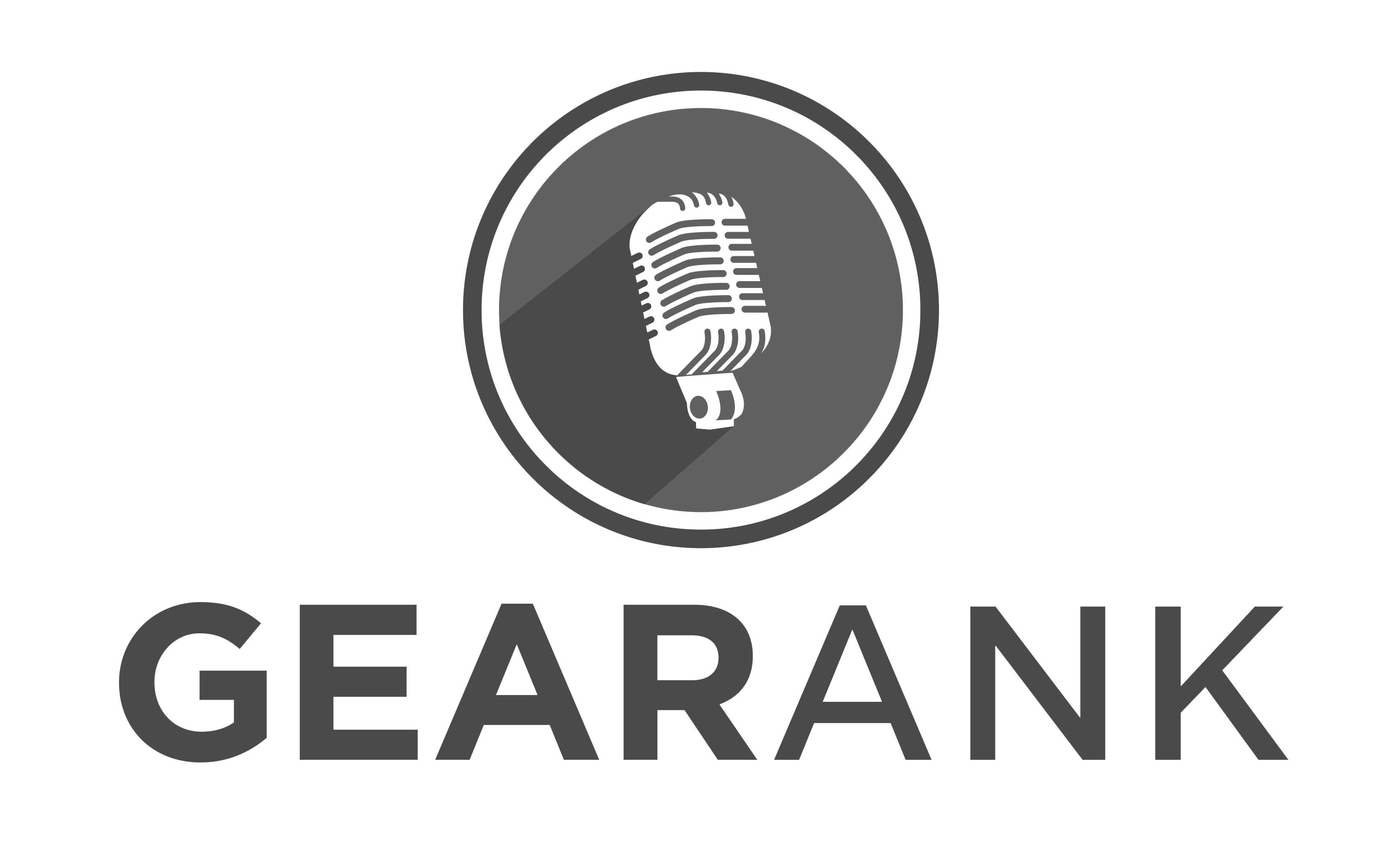
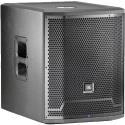
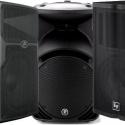
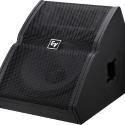
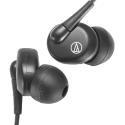
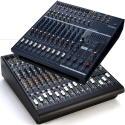
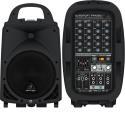
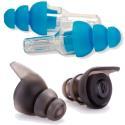
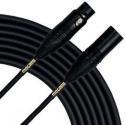
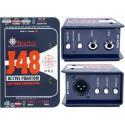
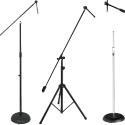
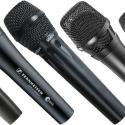
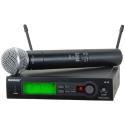
pretty cool info…… i decided on jbl srx 815p at 1799…… owned them 7 years now w/ no issues….. the qsc 153 i do see everywhere as great for a full band doing small shows….. either one is good :). thanks
Hi Raphael, Which portable speaker/ mix for possible outdoor and indoor use?. My go to genre is house music / the Orchestral Ibiza versions. So I wanted something that not only had the bass and volume but the reverb and acoustic, in order to carry that euphoric sound from the box but also the mic. If there’re any of these options are suitable for my needs it would be good to know your thoughts. TIA
Where are: d&b audiotechnik, Mayer Sound, Claire Brothers,L’Acoustics, Martin Audio, Kling&Freitag, etc. ?
Hello Raphael, thanks for your post
please, can you say to me which activ full range cab is good for an upright bass ? I have two differents preamp to play : minnow trickfish and lehle basswitch iq di.
In 12 or 10 ”
thanks
Hello Laurent,
The QSC KW153 – 15″ is my recommendation for upright bass. The speaker size is perfect for reaching lower frequencies and making most of the depth of the upright’s sound without flubbing out. 10″ and 12″ can work if you’re after the lower midrange tonality but they might not have enough excursion to push the air needed to sit the bass in the mix.
-Raphael
I am currently using a pair of Harbinger 2312 speakers and an S12 subwoofer for my electronic drum kit. It’s plenty loud but thinking of upgrading for more low end and clarity. Would it it better to use two 15” and ditch the subwoofer? Budget is an issue, I am trying to keep it around $1,200.00. I don’t know if it matters but I use a Yamaha MG16XU mixer. I was thinking of getting a pair of the Yamaha DBR15’s, what do you think?
For a Electric Drum kit, I think your setup is fine. Just add another S12 to your 2312’s and you should have have plenty of low end bass for your kit. Especially if your on a budget. If not QSC. IMHO.
The following speakers came off the recommended list above when we published the November 2022 Edition:
Things to consider- Do they sound good. I am really surprised that electrovoice speakers are not on this list while some clearly inferior products are. I have four electrovoice Elx 112ps for monitors and two Elx 115ps for mains coupled with a Yamaha digital mixer. Nirvana! If you run everything flat using Shute mic’s you will have zero feedback and it Weill sound fine. If you know what you are doing it will sound great. The electrovoice powered speakers are really good. For the price they are hard to beat. I am puzzled why they don’t show up often on the best of reviews.
Publication of our March 2022 Edition resulted in the following speakers coming off the recommended list above, but you can still see our analysis of them:
I thought J read where you had Martin XP12 as top speaker but I see here it did not make your list. How do the Martin speakers rate?
The Martin Audio Blackline XP12 isn’t widely available in the USA so it didn’t meet the criteria to be short-listed for selection – that means we also haven’t published a rating for it.
Have you guys run into the “Protect Mode 4” issue on newer QSC K’s?
There seems to be a lot of people experiencing an issue with the newest QSC firmware (1.2.0.3200; failures are mostly in K10.2s, for some reason). Users report that with properly staged gains and output levels (and with speaker gain at noon in reasonable room temperatures) they’re going into a failure mode, mid-gig, that turns them off and runs a test (which passes) until they’re reset.
Users who’ve spoken to QSC say they will not roll back to earlier firmware, and some are saying that firmware will be updated to the troublesome version when any repairs are done.
I have some workhouse K12.2s and was considering a pair of K10.2s until I read about this.
Have you guys into the “Protect Mode 4” problem that seems to be plaguing a lot of newer K10.2s (and supposedly some K12.2s)? This is a real problem for a lot of people… with appropriate signal in, gain at noon and ambient room temps, these things randomly turn off and require a reset procedure (that involves letting it play a 100Hz tone). Not what you want to happen on gigs.
Just curious as to how/why EAW (Eastern Acoustic Works) speakers never seem to make it into your ratings.
Hi Robert,
I was wondering when someone would ask us about EAW – it looks like you’re the first!
Although many of their speakers are priced above the current limit of $2000 for this guide, they do have some like the JF Series which do technically qualify.
The reason they have not appeared to date, and haven’t even made it onto any of our short-lists, is because they’re not widely available from US based retailers so they don’t have enough people rating and reviewing them for us to confidently rate and recommend them.
Although Full Compass does sell them, you can’t get them at Sweetwater, Amazon, Musicians Friend, Guitar Center, AMS, zZounds, Sam Ash etc.
EAW is on our radar, and if they become more popular they will definitely make it onto our short-lists and possibly even get recommended in one or more of our guides.
Jason.
Publication of our May 2021 Edition resulted in the following speakers coming off the recommended list above, but you can still see our analysis of them:
Absolutely love my Yamaha DBR10s. I use them for monitors, or mains. They just are great sounding.
Hi. David here.
After about a 2.5+ decade hiatus of music involvement (bands & sound engineering), recently been helping some old friends; so, kinda getting back into it.
Back in the day, usually used some sort of tri’amp system, in stereo. Usually consisting of either: 2″ high horns, 12″ speaker mids, & 18″ lows/subs(or some similar combo), w/a separate rack of amps to push the spkrs.
So, with no stores in my area to compare pa systems, I’m curious…
with these newer ‘Powered’ Pole systems, which make & model is the Best Bang for the Buck, that will compete, meet, or, if possible, exceed the Full Wall of Sound produced from the older Passive Spkr systems ? This would most likely be used for smaller to mid sized venues, gigs, parties, etc; say, from 100’s to 1,000’s of peeps.
I’m seriously considering something for my own future endeavors, &, could see the plus of not having to lug around a separate amp rack & saving some time from all the connections thereof. So..
TIA, in letting me know if there’s a Powered Pole System that will meet the above needs shared.
Peace !
David W
Hello David Williams
As someone who has been on both sides of the speakers (musician & Sound Man) for almost 45 years, I can tell you, you’re in for a VERY pleasant surprise. Yes, for many years I too worked with the big “wall of sound” (as you put it) systems (and the truck required to move those beasts!). The newer “modular?” systems now (powered mains matched with one or two powered subs/mixing board) are not only a million times easier to pack and move, but believe it or not, also actually also SOUND much better!! Speaker and amplifier technology has come an incredibly long way in the past 30 years. You’re going to have a much better sound field, much cleaner and tighter sound, both bottom end and top. And even a good quality 16 channel board is going to be half the size and weight on the old ones (and also better sound quality). Just make sure you have your reading glasses and a pen light ready for working on those 🙂
Hi David,
It seems that times have indeed changed over the last few decades as many sound system providers have made the jump towards powered (active) speakers and subwoofers. Venues have also changed as larger open air venues utilize larger, mostly active line array systems in conjuction with delayed auxilliary speakers in other parts of the venue to fill in the sound and utilizing powered subwoofers in optimally placed locations (sometimes floated/suspended).
In my brief experience working with a sound system rental service, a 1,000 capacity indoor venue used a combination of line array system speakers, tripod mounted delayed auxilliary speakers at the halfway mark of the venue and two to three subwoofers. Smaller events only need as much as 2 powered 12″/15″ Main speakers and 1 subwoofer. This smaller setup has worked for me even with louder modern metal bands (believe me they can get loud!)
So if you’re looking to invest, I suggest you focus on getting good speakers as your top priority as these influence the overall quality of your rig. Having powered speakers also allows for better scaling should you want to expand to having line arrays, multiple subs and monitors, etc.
So a good starter system for a small venue would be 2 powered mains, 2 powered floor wedges, a subwoofer and a mixing console. The great thing about this system is that because the speakers are powered, you wouldn’t have to worry too much about impedances and amplifier-speaker matching (though you do have to be aware of your system’s current draw on your electrical line!).
To get you started, here are some of our published guides:
Powered speakers (This guide. Just reposting this for reference)
Powered floor monitors
Subwoofers
For mixers, any mixing console can do. What’s important is you have enough channels for all input sources. If you plan on eventually expanding your setup, go for a mixer with more inputs than what you currently need.
There’s still so much more from this though such as speaker cables, mics and whatnot but I think this is enough information to get you up to speed for now.
-Raphael
Noticed that the Mackie SRM V-Class speakers have not been rated yet. Recently purchased one of these (SRM210) and have been very impressed with the sound and functionality.
We only have preliminary ratings for each of the 10″, 12″ and 15″ versions which we haven’t published yet.
Bringing them out in January this year was unfortunate timing for Mackie and review and rating sources are limited at the current time, but we hope to publish something on the series before the end of the year.
UPDATE: We have since published ratings for the SRM V-Class speakers which you can see here.
Today we removed the QSC KW153 from this guide due to a price increase putting it above the $1500 price limit.
how about Yorkville powered speakers
So far only their PS15P has made it onto our shortlist, but it does have decent ratings which you can see here.
Today we removed the following speaker due to a lack of availability: Yamaha DXR12.
Boycott speaker/amp companies that refuse to publish their continuous/RMS ratings!! In the past 2 weeks of digging into PA systems I’ve found peak:continuous ratios of 2:1 4:1 5:1, even 10:1!! Yup, one company rated their speaker as 2,000 watts peak and 200 continuous!
Knowing what a speaker or amp can handle for a millisecond is absolutely useless.
As a result of our August 2019 update the following speakers came off our recommended list – but you can still read our analysis of them:
The negative comments about JBL are hilarious. The 5″ and 8″ series are widely regarded among the best if not the best in their class.
Speaking of which, why aren’t 5″ speakers included here?
I was hoping to see something about the Peavey RBN-112’s with the ribbon tweeters. I did not find them in the database either, just the Dark Matter 112. Does anyone have experience with these?
The Peavey RBN 112 has never made it onto our short-list for this guide over several major updates, mainly due to a lack of popularity rather than its ratings, however I’ve published our rating of it today for all to see: Peavey RBN 112.
I have some real nice powered speakers but am not seeing the samson brand is that not good in ratings?
Samson are a good brand for many things however they haven’t yet had high enough ratings to make it onto our short-lists for powered speakers although their Auro X15D is a candidate that might make it onto our recommended list at the next update of this guide.
BTW you can look up all Samson products we’ve rated by going to the Music Gear Database.
So in conclusion which ones are better for a 400 ppl venue. The Bose F1 or the QSC 12K2 or the RCF evox 12?
I have no idea why RCF didn’t make the cut! I demoed the 12″Hd32amk4 against the qsc12k.2 Qsc got whooped!!I bought 2 RCF and get compliments from QSC owners!!
A pair of any of those aught to be fine however I think you’d get the best value out of the QSC K12.2 based on all the research we’ve done.
As a result of our December 2017 review of the Powered PA Speaker category we removed several items from this guide but you can still read about them:
What constitutes small-medium size venues in these reviews?
With so many factors to consider, there’s really no set standard for determining specific size category.
These factors include actual venue size, audience headcount, open air or enclosed, environmental noise, venue acoustics and many more.
But to answer your question, most will agree that small venues include coffee shops, bars, small restaurants and conference rooms. On the other hand, medium sized venues include enclosed auditoriums, churches, small gardens, and other venues that have a head count of less than 500.
You missed all the Cerwin Vega models. In particular, the CVA-28, the CV P1000X and CV P1500X. I also agree with the other posts, you did not even consider JBL and they have the best Mids and Highs, plus value.
The systems you mentioned were considered, they just didn’t rate highly enough to make our recommended list. You can click here for the JBL and Cerwin Vega speakers, along with their Gearank scores, that made it to our short-list in the Music Gear Database.
I have Yamaha dbr10 and it is brilliant. But looking at behringer b112d, and not too concerned about quality of sound, don’t really know how much potential loudness would suffer (quoted EPL only 113db, much lower than the others on the list).
Alto TS215 Active 15″ Speaker VS.
Studiomaster Drive 15A/6A 15″ Active
Hi – I’m looking for an upgrade from my Alto TX15 range to either of the above without breaking the bank tooo much. Can you possibly give me a rating and a recommendation if at all possible?
Thanks.
We have provided a rating for the Alto Professional TS215, however we have not rated the Studiomaster Drive 15A/6A because it doesn’t meet our current availability criteria for the United States.
Has to be sponsored by qsc or something, because the jbl prx are a great speaker, I have been abusing the heck out of some eon g2s for over 10 years! 2 gigs a week, never flinched, never had to repair, all original drivers, that says something, just get protective bags, whichever speaker you decide on.
As has been pointed out previously in this discussion, no manufacturers, including QSC, have paid any money or provided any benefit of any kind to us for anything we have done on Gearank.com.
In fact last year we removed all banner and display advertising (we were using AdSense) from this website. That means there is no possibility of us receiving money even indirectly from those companies via Google/AdSense.
At the current time our only source of revenue is from the retailers we link to – at the moment that includes Sweetwater and Amazon.
All of our product recommendations are guided by a scientific process involving statistical analysis of market sentiment using our proprietary Gearank Algorithm.
An overview of this is explained in How Gearank Works.
JBL SRX & FBT speakers will blow most of this tip 10 list out of water for Power & bottom end . Try before you buy.
Wow no love for the Alto Blacks OR TrueSounds? both of those series rank up there with QSCs ang EVs and mop the floor with JBL. I did a H2H in store with 5 jazz musicians with total over 175 years playing experience and they were hands down the winner playing anything with real instruments in it… ESPECIALLY in price/performance comparison!
If you would like the results of your Head to Head comparison to be included in the data set we use when we next update this guide, then write a report/review detailing your results on one of the popular music gear review sites or forums.
To get an understanding of our methods please read How Gearank Works.
You should be advised to include some of the concentric speaker enclosures out there, as powered speakers. Don’t know if they’ll fit in that range. RCF may be out of bounce, but there are others more affordable. I wished that Tannoy would release a full live PA powered speaker system. Germans DB may be price worthy though, you don’t need super expensive T&W and the like.
Is there a Gearank comparison of 3 way powered pa speakers? If there is not you guys should do one, thanks.
We don’t have one yet, but we are currently revising our publishing schedule and I’ll add that to the list of topics to consider.
Can you do a comparison of the Bose F1 system vs RCF Evox 12
Here at Gearank.com we don’t do head-to-head comparisons, we primarily do guides to an overall category.
However, if anyone wants to provide their thoughts on Bose F1 vs EVOX 12 here in the comments, they are certainly welcome to.
What about the Yamaha DBR12 under $500? Alto TX15? The alto is $200 to $250
Hi Andy,
Both speakers you mentioned did not out rank the others in their categories, the Yamaha DBR12 was close though. See their ratings below:
Yamaha DBR12: https://www.gearank.com/gear/yamaha-dbr12
Alto Professional TX15: https://www.gearank.com/gear/alto-professional-tx15
I cannot believe there are no RCF’s in this list? Quite extraordinary!
Hi Richard,
Someone else already brought up RCF speakers, and we’ve mentioned the reason why they are not included in this list, see the response at the link below:
https://www.gearank.com/comment/40#comment-40
The Alto Professional Speakers are the best. This list is wrong!
Hello Dynes,
We’ve processed three powered speakers from Alto Professional’s lineup and they’re not yet rated high enough to be included, compared to the ones listed.
You can see the scores of the Alto Professional speakers on the link below:
https://www.gearank.com/gear…
Hi Alexander,
Can you recommend to me the best powered speakers below $1000 for my MX61 Yamaha Keyboard. In terms of clarity of sounds specially the “bass” part of the keyboard. I came across this demo on youtube and I like the sound of the grand piano, I want to know what kind of speakers they are using. Thanks for your help.
Hi Jess,
All the powered speakers listed here should be able to give you the clarity that you’re looking for, as long as you keep the volume to a reasonable level. Go for 12″ or even 15″ speakers if you want deeper bass sounds.
If you can post a link to the youtube video demo that you liked, maybe we can help in figuring out the gear used.
If you cant hear the difference between a QSC K10 and ANY new JBL go back to guitar center and buy whatever the guitar player working in the “pa” department tells you to buy.
Not sure what you mean but I A/Bd my QCS153 and JBL PRX835 and traded in the QSC for the 835. The QSC was too harsh in the highs and loud volumes. The PRX is much warmer and more pleasing to the ear. Even my soundman, a huge QSC guy had to admit that at the end of the night he had less ear fatigue{ We have a Rock Band } and we get nothing but compliments on our sound. QSC was at the top for a long time. Not anymore.
Have you guys reviewed the FBT range of active speakers? They seem to be getting some attention.
FBT weren’t included when we produced this guide because they weren’t widely available from major online music gear retailers in the USA. We’ll check to see if that has changed when we next update this guide.
Great review here but, I question the thoughts on SPL levels for the EV ZLX series. While claiming the speakers are not loud, the experience with using these as mains, have totally left us speechless on how well the ZLX have performed. Plenty of sound, plenty of volume. Realizing they are not ELX or ETX, they still hold their own in this price range as the best affordable speaker.
This question about passive subwoofers has been moved to https://www.gearank.com/guides/pa-subwoofers#comment-159
I’m sure you’ve heard about Carvin, in the San Diego area. What do you guys think of their loudspeakers, in terms of quality, performance, and value?
Thanks for your thoughts!
Thanks for bringing up Carvin. I have personal experience with some of their gear, including PA Speakers, and in my opinion, both the sound and build quality are really good.
However, Carvin speakers aren’t widely available online (they’re mostly only available through their own store) and don’t have a lot of independent review sources, so even though I personally like their products there isn’t sufficient data for us to provide a rating at this time.
THANKs for taking the time to respond to me, Alexander!
God bless…
Seriously, Bose?
While the guide was looking good, and having used many of the speakers here especially the QSC’s with awesome results. The inclusion of Bose here destroyed your credibility. Most of us in pro audio know that Bose is a marketing company that makes lousy speakers, and decent headphones and clock radios.
This is another prime example of their bogus “Better sound through research” marketing. The point of line arrays is that they cut the inverse square law of signal decay as you move away from the speaker in half truly “Throwing farther”. However the requirement for that to work is the length of the array. In an array that in this case is 26″ long is going to have the 1/2 inverse square law decay rate from about 512Hz to 20KHz, but a full inverse square law decay rate from 512Hz down to the low cutoff of the woofer.
So what does that mean? If you EQ the speaker in one spot to sound good, but as you move closer everything from 512Hz and lower will increase at a rate of 1/2 inverse square. And inversely as you move farther away everything below 512Hz will decrease at 1/2 of the inverse square law. Now you have an arc where at one distance away from the speaker it sounds right. If you have two speakers, now there is only one place where it sounds good, and the only person that gets to enjoy it is the soundboard operator.
Why do you think “real” line arrays are so long? Even with that length, we still have that problem with our largest touring arrays.
Don’t believe the hype.
Educate yourself about line arrays:
http://www.prosoundtraining.com/site/synaudcon-library/line-array-limitations/
http://meyersound.com/pdf/support/papers/meyer_line_array.pdf
http://www.danleysoundlabs.com/danley/wp-content/uploads/2012/01/line-array-paper.pdf
Thank you for your detailed comments on line arrays Ryan.
We don’t see our role here at Gearank.com as being a participant in the debates over which technological approaches are superior to others, but we are happy for people like yourself to carry on that debate.
We do however try to make our guides as useful as possible by covering all the prominent technologies and brands that are currently in use.
The ratings we provide are a measure of user satisfaction, or to put it another way, they are a statistical analysis of market sentiment. The Bose F1 system continues to get very positive reviews from customers – in fact I just reprocessed their Gearank score and it went up from 92 to 94 as a result of the latest customer feedback.
For a better understanding of this process please read How Gearank Works.
Disclosure: Although Bose is not currently a sponsor Gearank.com they have been an advertiser and sponsor over the last decade of GuitarSite.com which is owned by Gearank.com’s parent company Hitsquad Pty Ltd.
Hi, how about yamaha dxr12?
Thanks
Hi EP – thanks for asking about them because we did examine the DXR range and included the 15″ version in the guide above, but it appears we forgot to add the rest of them to our public database.
I’ve just added them and updated their Gearank scores. The 8″ version still isn’t as popular or as highly rated as the others, but both the 10″ and 12″ versions have increased their Gearank scores to 95.
You can now see the full Yamaha DXR range here in our Music Gear Database.
Curious how the TurboSound I series stack up with the others. Any chance of including them in the ranking?
Sorry did a typo, it’s the TurboSound IQ8/IQ10/IQ12/IQ15 powered speakers that I’m interested in.
No problem – I wanted to process the Gearank scores for both the iQ and iX series so you got them both anyway!
Back when we published this guide in January, and again in April when I re-checked, the Turbosound iX range didn’t have enough rating/review sources for us to rate them – but the early reports were positive so I made them my Editor’s Pick at that time.
I checked again today and there are now enough sources of information to produce a Gearank score for both the 12″ and 15″ iX versions, so as of this moment we have the following results…
Personally I’m surprised the iX series hasn’t gained more attention because when you consider that most people who have used and rated them have been very positive, they look like fairly good value to me at their current $349 & $449 price points.
I’ve also processed the higher priced iQ range and here are those results…
There seems to be a limited amount of talk about the Turbosound iX/iQ series at the moment, but here’s a few discussions that do provide some useful information:
Found your article/review while searching for a compact PA system. The Turbosounds intrigued me greatly. I am now really considering the iP2000 Array system. Have any thoughts on that particular series? Thanks.
Hi Xela – we haven’t rated the Turbosound iNSPIRE iP2000 yet but the category of compact PA systems is on the list of topics we’re considering covering so thanks for letting us know about your interest.
This list is utter crap…..no mention of EV ETX or EKX,QSC KW series….but Mackie Thump and Behringer Eurolive made it? Come on man,this is 2016….Do proper research before compiling a list such as this…..Thank god I don’t have to depend on this I fo some one people on here!
I don’t agree with your assessment Gerard, but I can understand why you feel the way you do about this guide because back in January 2016 when we published it, less than 4 weeks after we opened the site to the public, we weren’t yet publishing the Methodology section in our guides which points out the selection criteria we used (here’s a recent guide with the Methodology section included).
At that time the EV ETX and QSC KW series didn’t meet the pricing/availability criteria we were using.
The EV EKX-12P & EKX-15P did meet the criteria however they simply didn’t score high enough to be included at the time – part of the reason was that those speakers were still relatively new and there were very few reliable rating sources available for them back then.
Now that more than 6 months have elapsed since this guide was published, many more customer reviews, forum discussions and expert reviews have become available, so today I processed both EKX powered speakers and made them available in our public database:
• Electro-Voice EKX-12P
• Electro-Voice EKX-15P
If we were to redo this guide today the EKX-12P still wouldn’t have high enough ratings to be included, but it’s possible the EKX-15P might make the list.
Here’s a list of all the Powered PA Speakers currently in our public Music Gear Database.
For a better understanding of Gearank please see How Gearank Works.
OK will check it out.
How much did QSC pay you to do this article?
Wow please do your research dude. Used to be a EV and JBL fan many years ago but QSC beats EV, jbl and cerwin vega. Used to use vega when I used to DJ back in the day but now I don’t even consider them!
No one, including QSC, has paid us either to write a guide on a particular topic or to be included in any of our gear guides.
At the time of writing Sweetwater is sponsoring this guide – this gives them exposure including their logo and links to their website but they do not determine which products are included as you can see from the fact that not all of the products mentioned are sold by them.
Each of the products listed above, apart from the Editor’s Pick section, has one of the top 5 Gearank scores in their category of all the powered PA speakers in our database.
If you believe there is a powered speaker that should be added to our database then please let us know.
What do think about Presonus ULT15’s
For now, there aren’t enough reviews of this speaker to make a proper recommendation.
Hi, forgot to mention in my previous question that the setup will be used for a light jazz trio consisting of double bass keyboards and drums. Thanks
Hi, really appreciate the review. Wondering which stereo set up/2 powered speakers you would recommend for the truest representation of the source, with special emphasis on best ratio between clean (mud/cloudy free) bottom end and portability(light weight, no more than 30lbs each), for smallish venues of say around 50-80 people capacity. Price is not an issue.TIA
Having good bottom end and portability is a rare combination. I’d recommend the QSC K8 as it falls within your weight limit at 27lbs, but it may not have enough low end. The QSC K12 gives you more bottom end but is almost twice as heavy. The QSC K10 is a good in between, and should have enough low end for a jazz trio.
I would like to recommend the Cerwin Vega P-Series.
I have 16 subs, 6 x 15” tops & 4 x 10” tops.
I also have for Yamaha DXR 8’s which is why I am writing this comment.
The best thing about the Cerwin Vega’s other than the sound is the front light limiter fo me. The sound is incredible, much better that the electro voice and Yamaha’s.
Yamaha’s cannot be used without the high pass filter switch set in the middle setting and when it is turned off it doesn’t sound good at all.
The PX1000 wipes the floor with yamaha for sound quality.
The subs I have never yet had a problem with them for the 3 years I baught them other than fans breaking and changing them.
I have had problems with 2 15″ tops and no problems with the 10″ tops but they are just 1 year old. The tops woofer didn’t work on 2 occasions and needed to be sent in for service. Not sure what the problem was as I just send them to the shop for repair and they came back working again.
Only bad thing about the subs is the handles are awkward on the wrist when lifting with 2 people.
I haven’t heard the Bose or QSC but I’ve never been a fan of Bose speakers.
I know that the P-Series is much much better than some of the speakers you have chose as your top 10.
We appreciate your personal recommendation on the P1000. I’ve read good things about it as well, but unfortunately there aren’t enough reviews to include it in this list. This may not indicate poor quality, but it does indicate low market performance – or at the very least, users were too busy to commend the product.
For anyone who’s interested, we do have some Cerwin-Vega products in our music gear database.
Hey ur reviews are great! I’m a one man band (a wedding singer) & perform at medium size venues for approx. 100-400 people. I’ve shortlisted a few brands. Would really appreciate if u could please provide an honest feedback on what would work best for my usage:
Order of my preference
1. QSC K12 12″ Powered PA Speaker 1000W
2. JBL EON615 – 1000W 15″ 2-Way Powered Speaker
3. RCF EVOX 8 or 12 (if I get a good price)
How would u compare/rate the Bose L1S with B2 bass unit, I know they r expensive but are they as powerful as the above listed brands?
I also hear of the Fender Passport Venue Speakers. Any feedback?
Would appreciate ur advise, as I’m thoroughly confused. cheers!
The QSC K12 is highly recommended, with its proven acoustic and vocal friendly sound. Based on ratings, the QSC K12 trumps the JBL EON615, so that’s an easy pick right there, especially in your case where the speaker needs to be of high quality and easier to carry around.
I’ve read good things about RCF EVOX speakers as well as the Bose L1S, but not enough to make recommendations, for now. Maybe in the future when we’ve researched Portable PA systems some more. [NB: We published a comprehensive guide to Portable PA systems on Dec. 23, 2016. – Ed.]
The Fender Passport Venue is definitely worth considering, given its portability and built-in mixer features, in case the father of the bride (or the entire family) wants to sing with you. The only downside is that it may not be enough for bigger open space venues.
Hey im looking for a speaker to play my music in my room. I’m looking for one speaker I will buy a second one once I save up.
I just want the best clear nice bass audio really debating on getting the DRb10 or a Behringer B112w which is the Bluetooth version of the B112d or even the turbo that your sound editor picked.
I don’t know if should get the Behringer or loose the Bluetooth for the Yamaha. Do you think the sound on the Yamaha is better in clearness and deep bass or should I just get the bigger 12 in Behringer for louder sound and deeper bass.
And again this is going in my room will the 12 in be too much for my room? If it is there’s no point in getting another 12 inch to make it a pair so I don’t know if i should get 2 10 or one 12 or maybe even just one 10 which would be the Yamaha.
I will be playing music and movies, video games and I could just lower the volume but I don’t wanna loose too much sound quality so bottom line bigger speaker or smaller speaker? Remember I won’t be playing them too loud.
Please and advise or help on what too choose I been debating for a while now and your post really helped give me an idea. You guys are awesome thanks so much.
Given that you’re just going to be using this in your room I’d suggest the Behringer B112w would be just fine – it also has a built in 2 channel mixer.
Don’t forget that if you want stereo then you’ll need 2 speakers.
I hope this helps.
How would these speakers compare to some old ev s200s in low end punch?
I haven’t personally used the EV s200s, however they have 12″ woofers so you’d expect any modern 15″ speaker to have a stronger bottom end.
If you’ve never tried QSC, treat yourself. I rented a K12 as a keyboard monitor and my goodness, the bass that thing was capable of is amazing. I had to engage the hi-pass switch as the bass player was giving me dirty looks. And yes please, it would be great to know which sub would be a good match for K8/10s
How about doing a review on powered subs for ~$1,000
It has now been done – Guide to The Best PA Subwoofers – Powered & Passive
A subwoofer guide is a good idea – I’ll add that to our list of topics to investigate.
Was RCF out of the price range?
The RCF Art series are definitely within the price range, however they have limited availability in the US – you usually have to buy them on special order.
However they are widely available throughout Europe so if anyone would like more information about RCF powered speakers go to http://www.rcf.it/product-finder/active-speaker
No offense. RCF Art series is garbage just like the JBL PRX. Sounds like radio amplified. Good that its not listed here. If you want noise then it is, not for music.
Clearly you haven’t done any testing or comparisons the new series IIII 700 series sound very good and most italian companies make great speakers like FBT & DB youre talking through your hat.
You’ve clearly not heard RCF’s ART 745-A. It’s easily one of the best loudspeakers in its price range. Actually, considering its price, it probably is the best bar none. With its huge 4″ driver, there’s little competition for it if small-mid range venues is your thing.
My band has been using both EVs and JBLs for years now and they’re both really good powered speakers. Why didn’t you include JBL on your list?
JBLs Are not what they use to be. I had the PRX 735s and after several shows the inside housing on both cabs were rattling and buzzing. Very annoying. When I saw them open up the cabs. the parts were as cheap as could be. Even the tech was shocked. He suggested QSC 153s. I took the loss on the trade in and never looked back. The QSCs blow them away in sound quality and build quality. So I am not at all surprised the smaller QSC were on the top. The 153s are probably too $$$ for this list but would be at the top if that price range was being considered. Also the EVs have way too many complaints of breaking down as do Mackie. You RARELY see that on QSC reviews. Being in a working band Quality and reliability are everything. QSC tops the list IMO
Being a sound engineer, Jbl’s used to use quality components back 20 years ago but what they are putting out now is not professional grade products. I have qsc153 they are a bit on the heavier side but in terms of professional sound reinforcement they cannot be beat! It comes down to what is your main concern when performing live, quality professional products or products that fit your budget. I prefer to wait when making a purchase but get a product that is top notch!
QSC rocks!
JBL has never been a good speaker EV beats them hands down are you deaf?
I listened to JBL and EV side by side and chose the EV Live X series. EV beat JBL hands down.
Agreed. Anyone have any comments on the Turbosound ix15’s?
We have a rating for them – Current Turbosound iX15 Gearank Rating.
I build Adamson speakers and they are great build with kevlar drivers great outside in all wether but you will pay.
Would you help me compare the two EV and JBL? What is the best choice in durability, audibility among others?
We have 4 JBLs and 4 EVs currently in our public database.
If you click on those links you’ll see that the EVs generally have higher Gearank scores than the JBLs – this means people who have bought the EVs are more satisfied with their gear than the people who got the JBLs instead.
That’s why we recommended the ZLX-12P & ZLX-15P EVs above but have not done so for the JBLs at this stage.
Thanks Jason
the Ev speakers seems to be much heavier in their performance would you pliz high lighten on the ratio of Amp to speakers in terms of there watts.
Thanks John – you were quite right that we were trying to stick to a price range, we didn’t want go much over $1,000. If we had gone up to $1,500 the the QSC KW153 would have been in the list too.
We did take a look at several JBL systems but none of the scored a high enough Gearank to be included in this gear guide.
Curious as to what was lacking in JBL. The PRX 800 series and I assume SRX series should be included. The PRX 835 head to head with QSC 153 are louder and not as harsh on the high end.
We make our recommendations based on overall product ratings rather than by considering specific aspects or features (except for special picks like the Budget Option above) – you can see how we analyze reviews and opinions from around the web to produce our ratings in How Gearank Works.
We only go into the detail of which aspects are good or lacking for items we select to recommend, so unfortunately I can’t give you specifics in this case other than to say that overall sentiment is less favorable for the ones we didn’t recommend.
I’m disappointed with this list. I’m surprised that Mackie’s were cited as being “reliable.” I had a pair of Thumps that were anything but reliable. I had to replace them after six months of use. JBLs are known for reliability, not Mackies.
The Gearank scores are based upon customer feedback and expert reviews of the latest models.
Here are the JBLs we processed and none of them had enough positive feedback to score high enough to be included.
If you think there is a current JBL model we should process for a Gearank score to see if it should be included, then please let us know.
You tested the entry level jbl gear…. how about srx etc?
Hi Walt – there are 2 important points to make in response to your question:
To get a better handle on this please read How Gearank Works.
Clueless jbl are top of the list think your survey is a bit wrong
I had a pair of PRX615’s the bass was good the horn was crap so that’s probably why they didn’t get a mention a lot JBL speakers have a funny midrange and top end most DJ’s don’t notice this but put one up against something like the RCF 700 series and the FBT VENTIS/PROMAXX and you’ll notice the difference.
I have had JBL PRX625 now for almost four years and they are really good, never had problems with them. Just bought Bose F1 system two months ago and had two sub woofer rattling. JBL deserve to be on this list.
The JBL PRX625 speakers are no longer available to buy from most of the major North American retailers which is why this specific model was not included.
BTW – although JBL didn’t score high enough to be included in this guide, they topped the ratings in our guide to the Best PA Subwoofers.